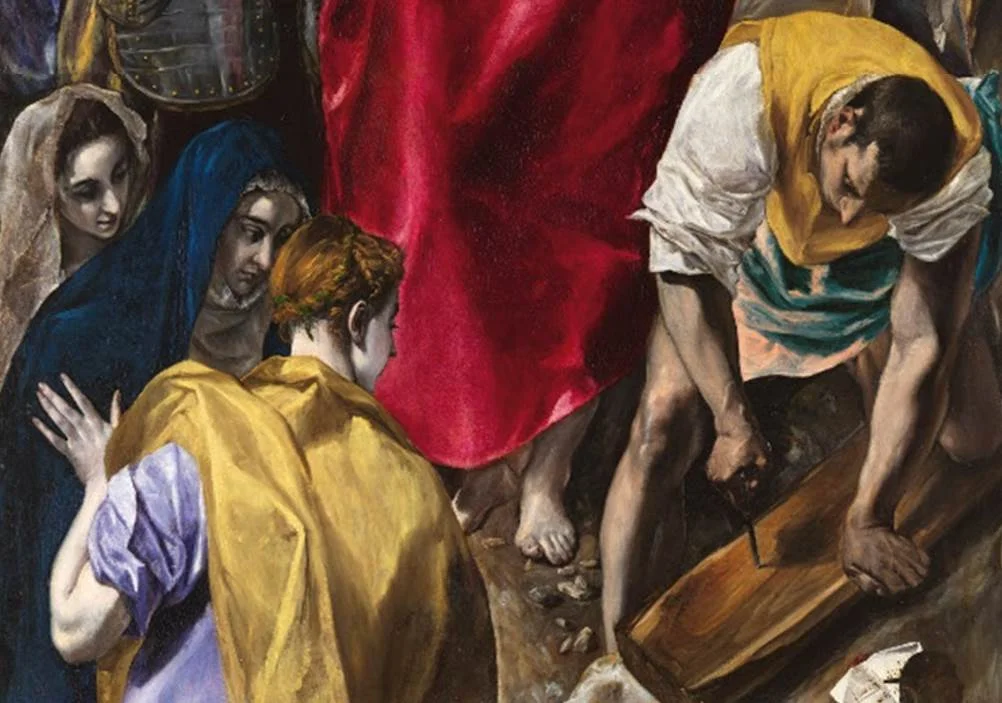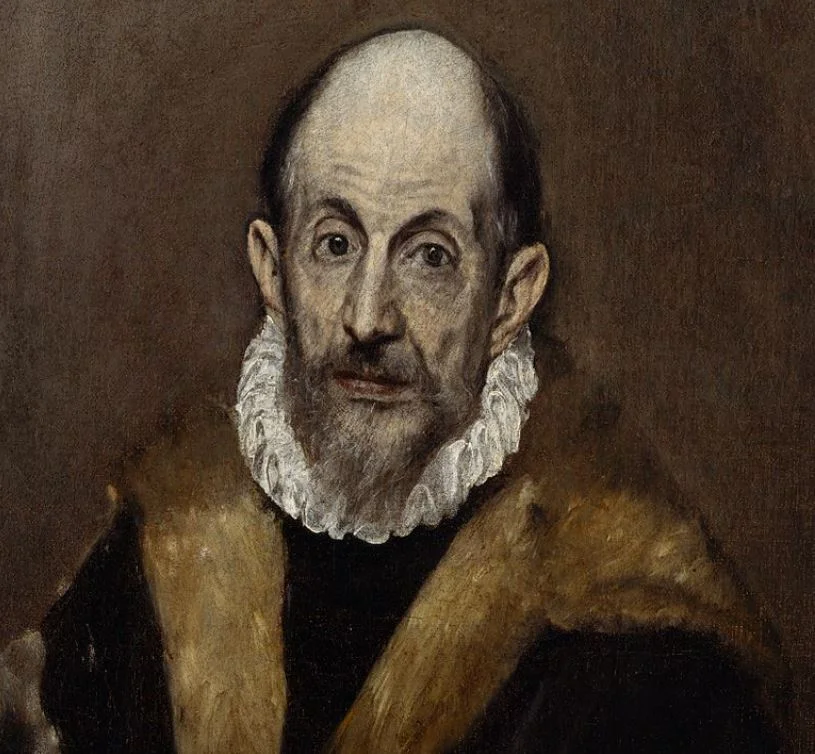The Greek-born painter of the Spanish late Renaissance named Doménikos Theotokópoulos (1541-1614), better known by his nickname “El Greco,” moved quite a bit during his younger years.
He left his home, the Kingdom of Candia which is modern-day Crete, and moved to the Republic of Venice during his twenties. Following a brief period in Rome, he left for Spain and eventually settled in Toledo.
Even though he didn’t plan to stay here, he ended up being respected as the leading painter in the city. He received so many commissions that he never left.
In this article, we’ll take a closer look at one of these commissions called “The Disrobing of Christ,” one of El Greco’s masterpieces that he produced shortly after arriving in what became his hometown.
1. It was painted during the 1570s
El Greco moved to Spain in the year 1577, and after initially settling in Madrid, he made his way to Toledo. This city is located just south of Spain’s capital and it’s here that that the artist received plenty of commissions.
He had some connections in the city and received several commissions in 1577, mainly for the church of Santo Domingo el Antiguo.
The Disrobing of Christ, a work that is also known as “El Expolio,” was not commissioned for this church but for the main Cathedral of Toledo to serve as the main altarpiece.

2. It depicts the scene before Jesus Christ was to be crucified
Just as the name of the painting implies it depicts the scene moments before Jesus Christ was about to be executed. He stands in the middle of the composition and is surrounded by his executioners.
The red robe he is wearing really draws the attention of the viewer as he glances up to the Heavens above. One man points his finger accusingly to Jesus while another man in the foreground can be seen drilling a hole. This is where the nail to go through his feet is supposed to be.
3. The Three Marys weren’t supposed to be included in the painting

Many of the people surrounding Jesus are positioned above his head, something that wasn’t really appreciated by the leaders of the church who commissioned the work.
This wasn’t the only dispute that El Greco faced upon completion. The presence of the Three Marys, which can be seen in the foreground on the left side of the work, was questioned as well.
That’s mainly because their presence isn’t mentioned in the Gospels yet the moment that this scene takes place. The same applies to the rope around Christ’s hands.

4. There’s a strong contrast between Christ and the people around him
The figure of Christ appears to be completely relaxed and serene, a sheer contrast compared to the agitated people that surround him.
Another interesting element of the painting is that El Greco painted Jesus Christ with idealized features, another contrast compared to the rather rough-looking executioners who are presented dark and grim.
These notions in combination with the fact that the overall composition of the painting is designed vertically emphasize the oppression that Jesus suffers, making it even more remarkable that he appears to be so calm.
5. It still hangs in the location it was commissioned for
The painting was commissioned as the main altarpiece for the Cathedral of Toledo and remarkably still decorates this cathedral today.
It’s situated on the high altar of this cathedral and is presented in an elaborately ornamented marble frame in combination with Corinthian pillars.
The original frame of the painting was even more impressive as it featured gilded wood that was designed by El Greco himself as well. unfortunately, this has been destroyed.

More interesting facts about the Disrobing of Christ by El Greco
6. Because this is an altarpiece it’s a relatively large work. This oil on canvas painting has dimensions of 285 × 173 centimeters (112 × 68 inches).
7. This painting was completed somewhere between 1577 and 1579 along with 9 other paintings that he completed during this period. This instantly established El Greco as the leading painter in Toledo at the time.
Another famous work completed during this period was “The Assumption of the Virgin,” one of the works that were commissioned to decorate the High Altar of the church of Santo Domingo el Antiguo in Toledo. It now resides at the Art Institute of Chicago.
8. The document of contract for this painting was signed on July 2, 1577. This is a remarkable item because it’s the first notion of El Greco’s presence in Spain.
He would eventually live here for the rest of his life and produce most of his most famous works in this city, including two of his most influential paintings such as “View of Toledo” and “Opening of the Fifth Seal.”
9. Even though a contract was signed which stated that the artist was supposed to be paid 950 ducats for his work, he never received this amount. The reason was the dispute with the Catholic authorities who didn’t want to see the Three Marys and the figures above the head of Christ.

After a brief legal battle, the artist ended up being paid only 350 ducats and received the order to remove the mentioned figures. He eventually only accepted the money and never removed them.
10. Even though the main painting is located in the Cathedral of Toledo, there are a couple of replicas in existence. Some of them are even from the hand of El Greco himself.
One of these is dated around 1600 and is part of the collection of the National Museum in Olso, Norway. The other replica attributed to El Greco is located at the Alte Pinakothek, Munich, Germany, and is believed to be a sketch he created in preparation for the main work.
In total, about 17 works were created based on this unique masterpiece by El Greco, something that clearly shows how influential this work has been for other artists.

